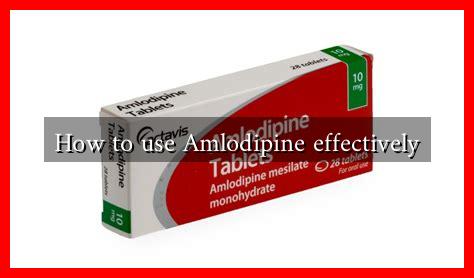-
Table of Contents
How to Use Amlodipine Effectively
Amlodipine is a widely prescribed medication primarily used to treat high blood pressure (hypertension) and certain types of angina (chest pain). As a calcium channel blocker, it works by relaxing the blood vessels, allowing blood to flow more easily. However, to maximize its benefits and minimize potential side effects, it is essential to understand how to use amlodipine effectively. This article will explore the proper usage, dosage, potential side effects, and lifestyle changes that can enhance the effectiveness of amlodipine.
Understanding Amlodipine
Amlodipine is part of a class of medications known as dihydropyridine calcium channel blockers. It is commonly prescribed for:
- Hypertension
- Chronic stable angina
- Vasospastic angina (Prinzmetal’s angina)
According to the American Heart Association, nearly half of adults in the United States have high blood pressure, making medications like amlodipine crucial in managing this condition.
Dosage and Administration
The effectiveness of amlodipine largely depends on the correct dosage and adherence to the prescribed regimen. Here are some key points regarding dosage:
- Initial Dosage: The typical starting dose for adults is 5 mg once daily. Depending on the patient’s response, the doctor may increase the dose to a maximum of 10 mg.
- Timing: Amlodipine can be taken at any time of the day, but it is essential to take it at the same time each day to maintain consistent blood levels.
- With or Without Food: Amlodipine can be taken with or without food, making it convenient for patients.
Always follow your healthcare provider’s instructions regarding dosage adjustments and never self-medicate or change your dosage without consulting them first.
Managing Side Effects
While amlodipine is generally well-tolerated, some patients may experience side effects. Common side effects include:
- Swelling of the ankles or feet (peripheral edema)
- Flushing
- Dizziness
- Fatigue
If you experience severe side effects such as chest pain, irregular heartbeat, or signs of an allergic reaction (rash, itching, swelling), seek medical attention immediately. Regular follow-ups with your healthcare provider can help monitor any adverse effects and adjust treatment as necessary.
Enhancing Effectiveness Through Lifestyle Changes
In addition to medication, certain lifestyle changes can significantly enhance the effectiveness of amlodipine:
- Diet: Adopt a heart-healthy diet rich in fruits, vegetables, whole grains, and lean proteins. The DASH (Dietary Approaches to Stop Hypertension) diet is particularly beneficial.
- Exercise: Regular physical activity can help lower blood pressure and improve overall cardiovascular health. Aim for at least 150 minutes of moderate aerobic activity each week.
- Limit Alcohol and Caffeine: Excessive consumption can raise blood pressure. Moderation is key.
- Quit Smoking: Smoking cessation can improve heart health and enhance the effectiveness of blood pressure medications.
For more information on lifestyle changes to manage hypertension, visit the [American Heart Association](https://www.heart.org/en/healthy-living/healthy-eating/eat-smart/nutrition-basics/dash-eating-plan).
Conclusion
Using amlodipine effectively involves understanding its proper dosage, managing potential side effects, and making necessary lifestyle changes. By adhering to your healthcare provider’s recommendations and incorporating healthy habits, you can significantly improve your blood pressure management and overall cardiovascular health. Remember, effective communication with your healthcare provider is crucial for optimizing your treatment plan and ensuring the best outcomes.


